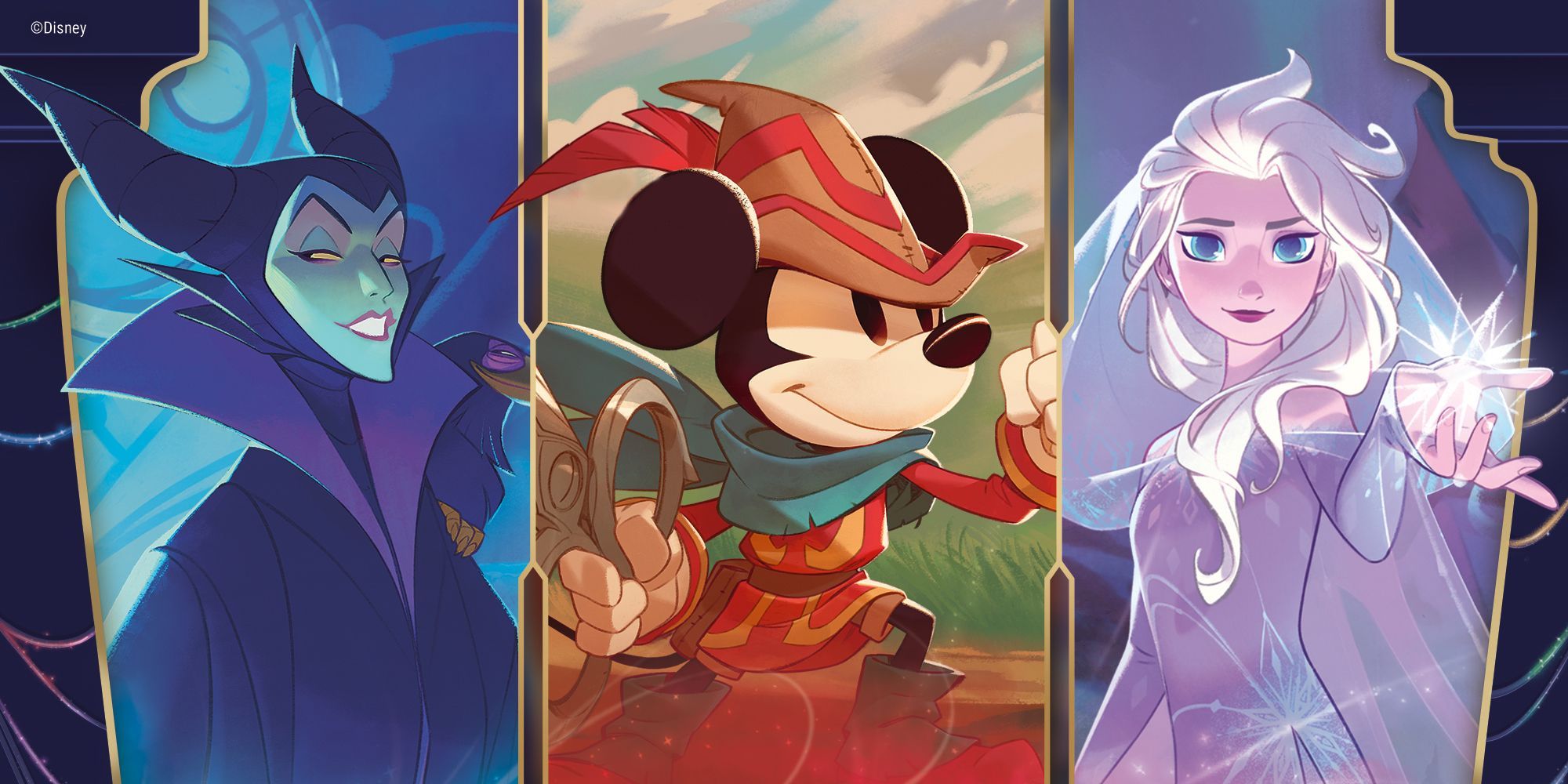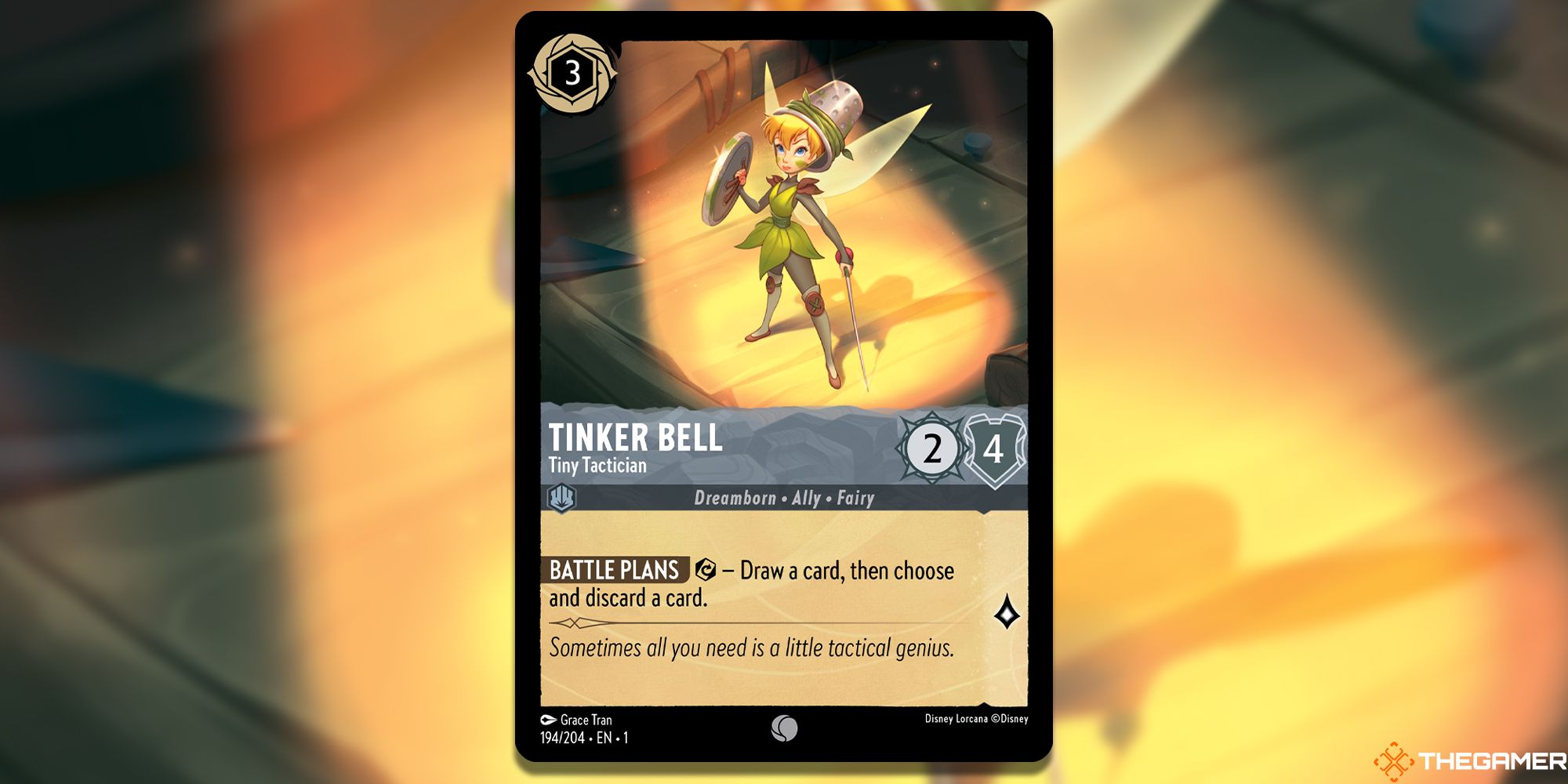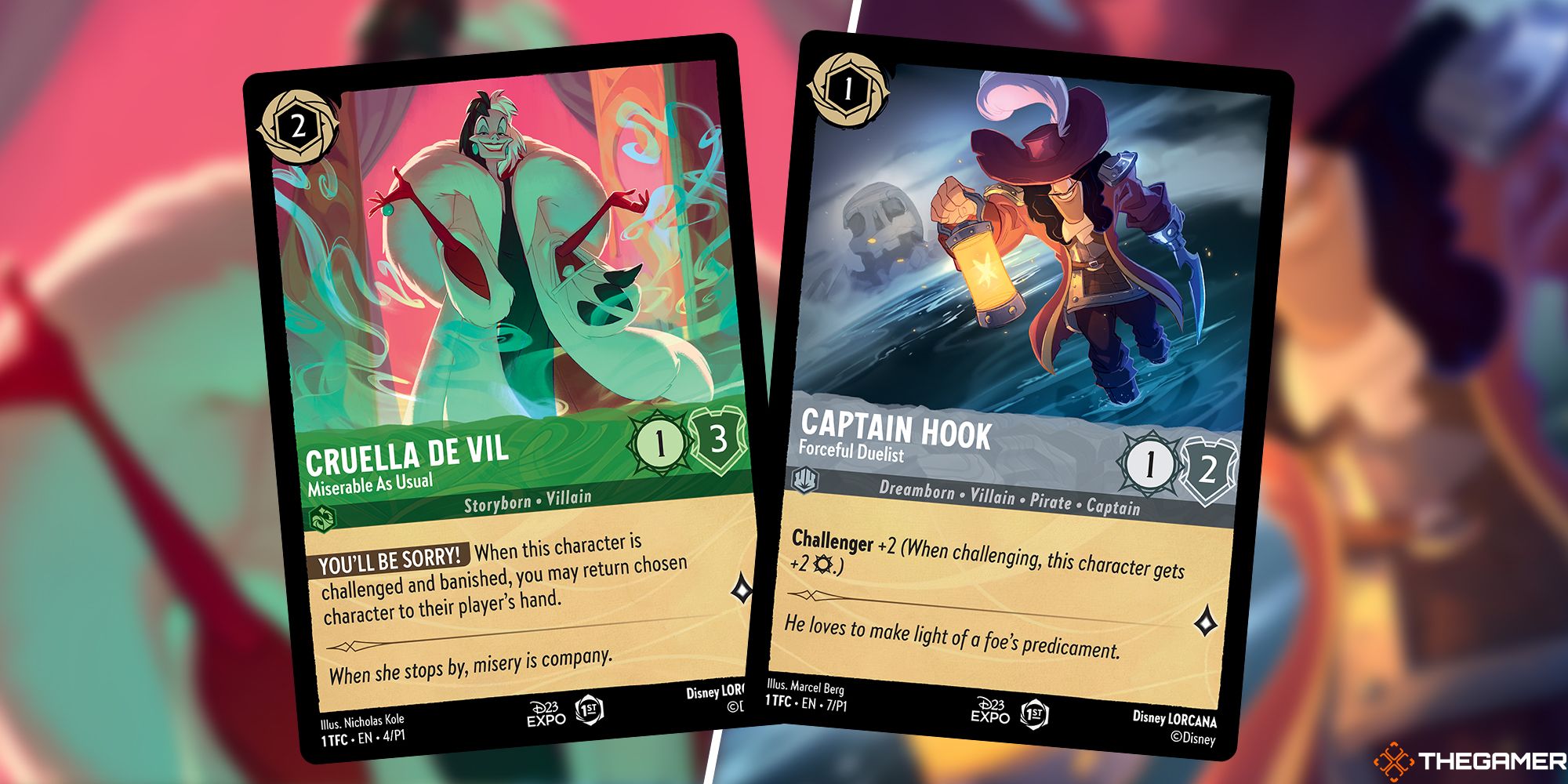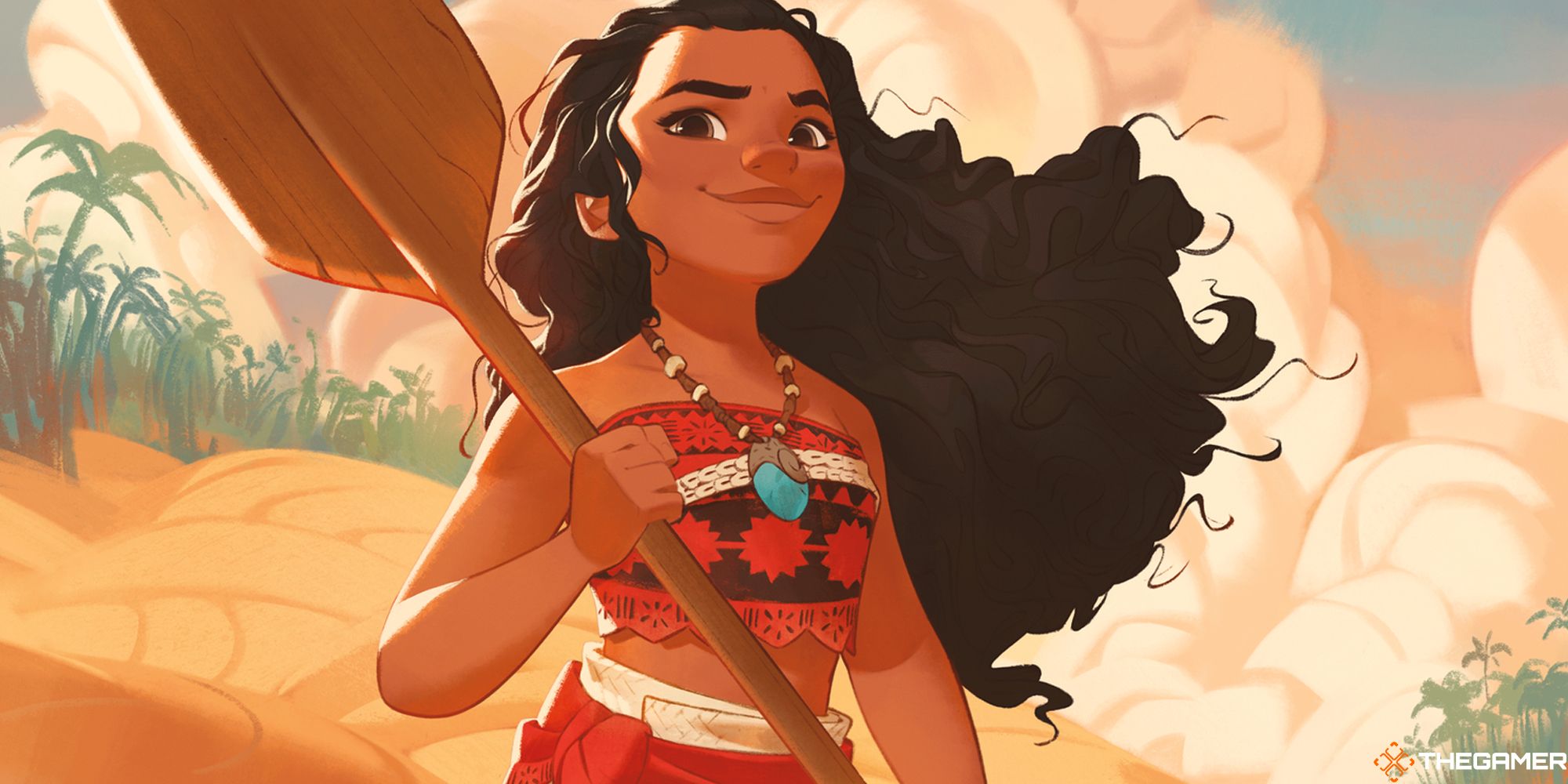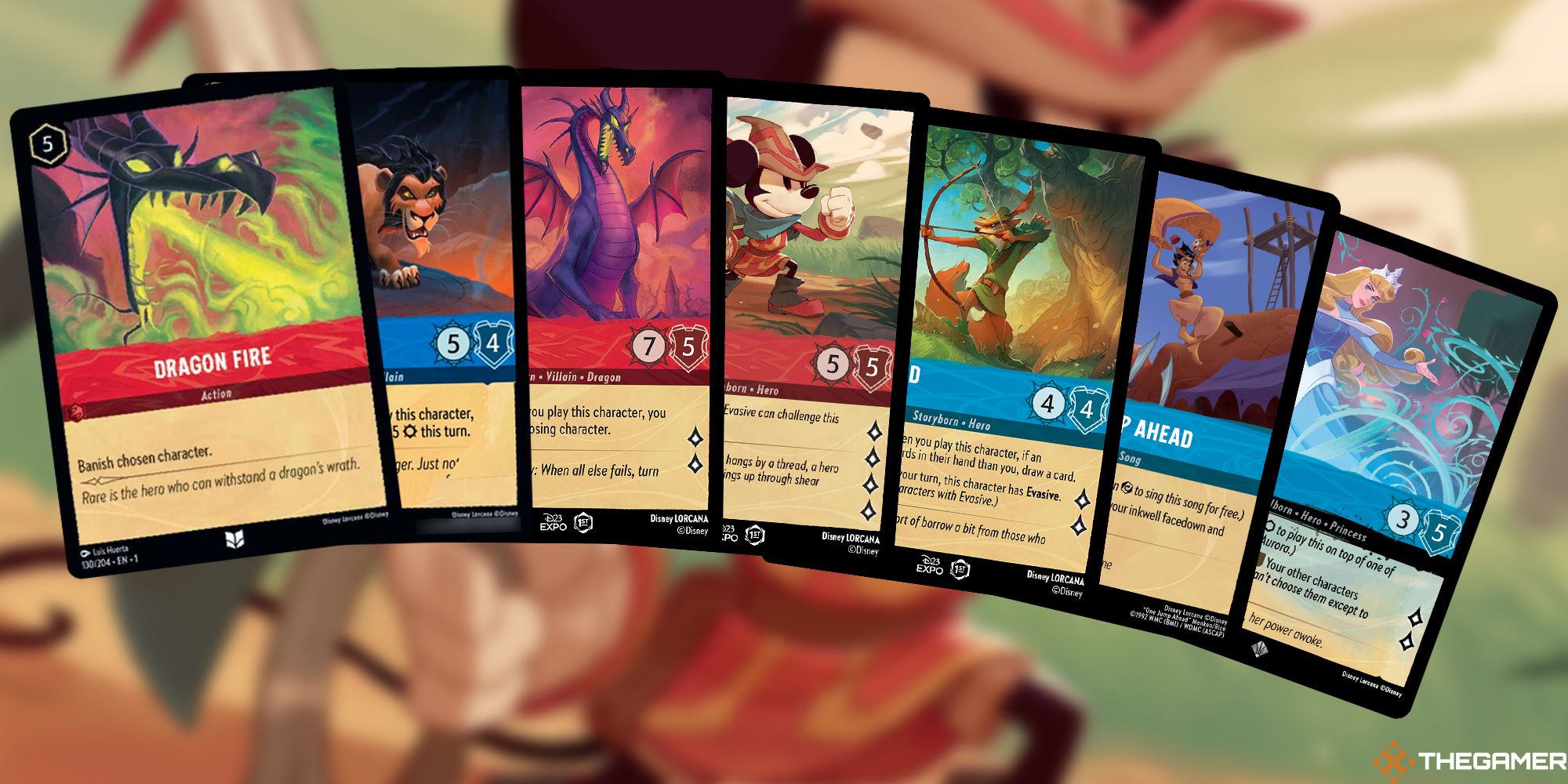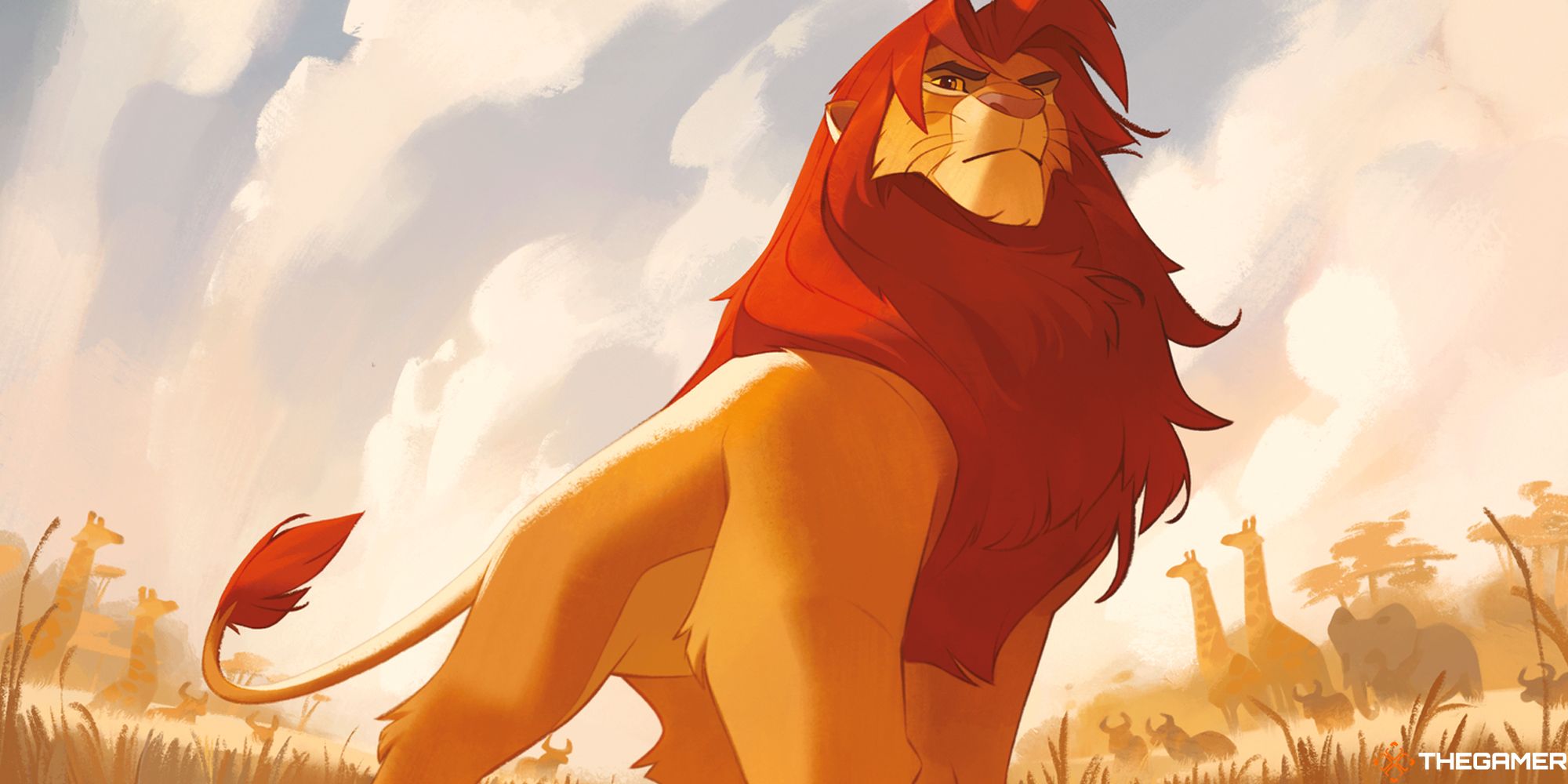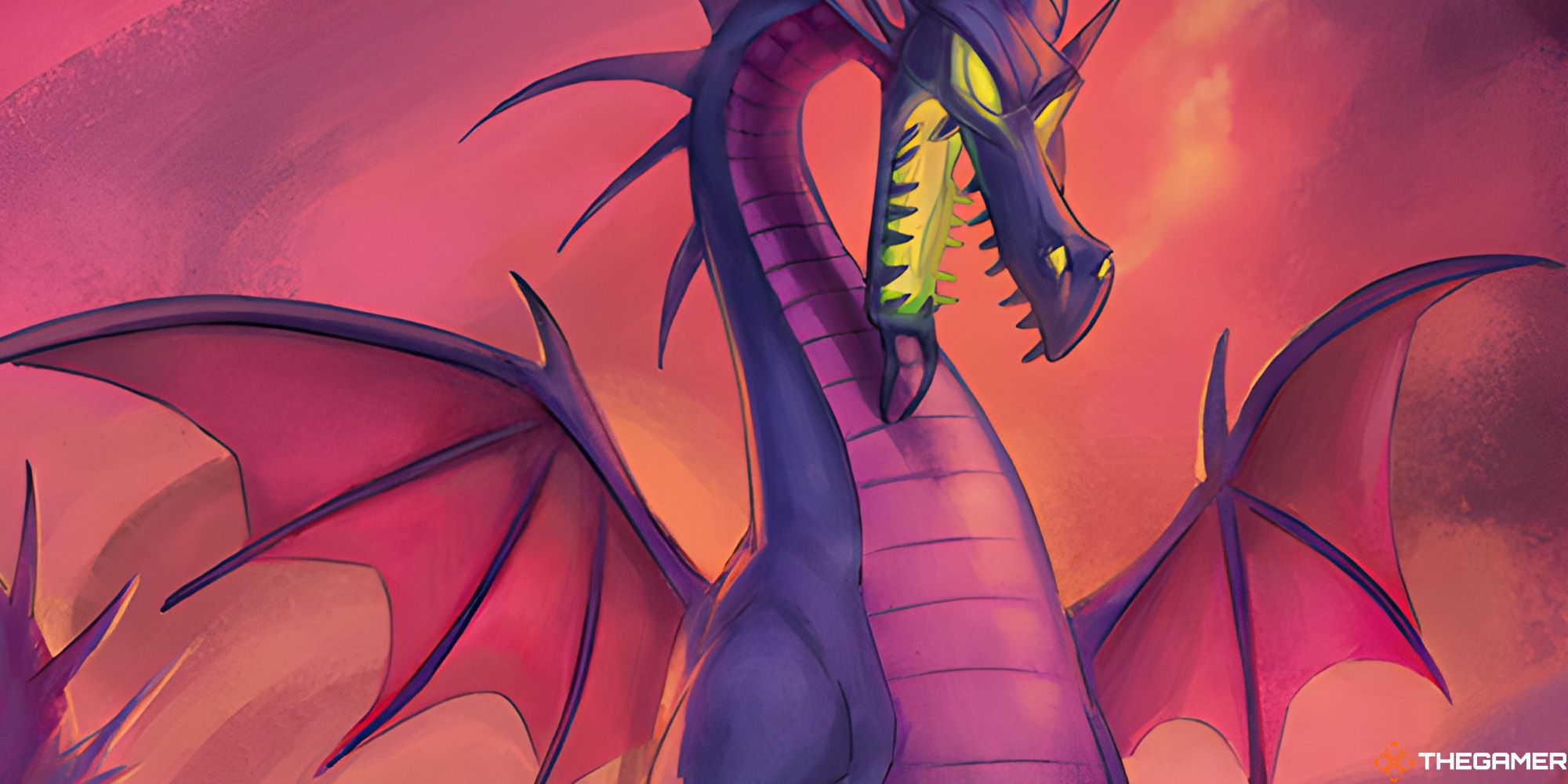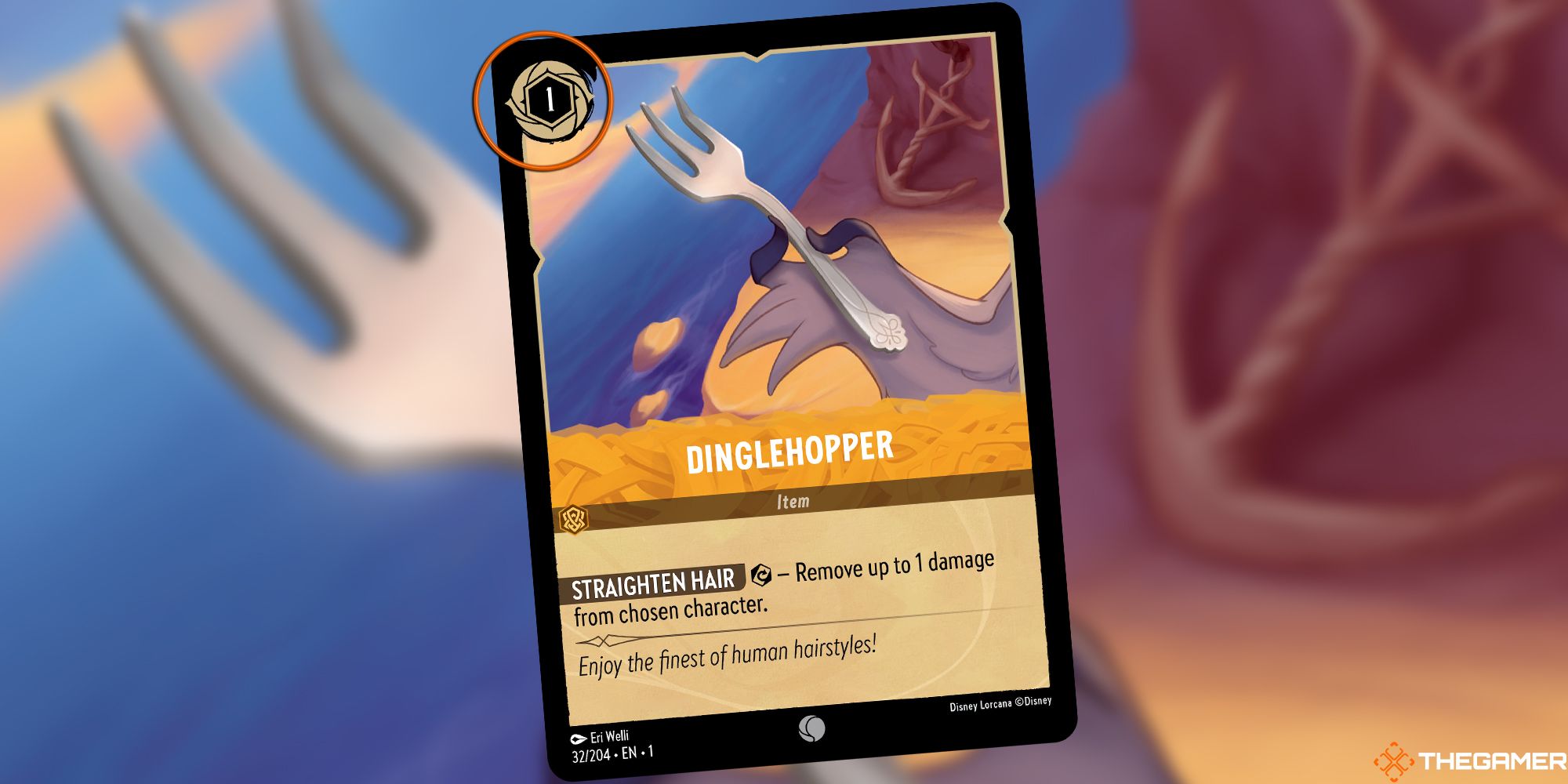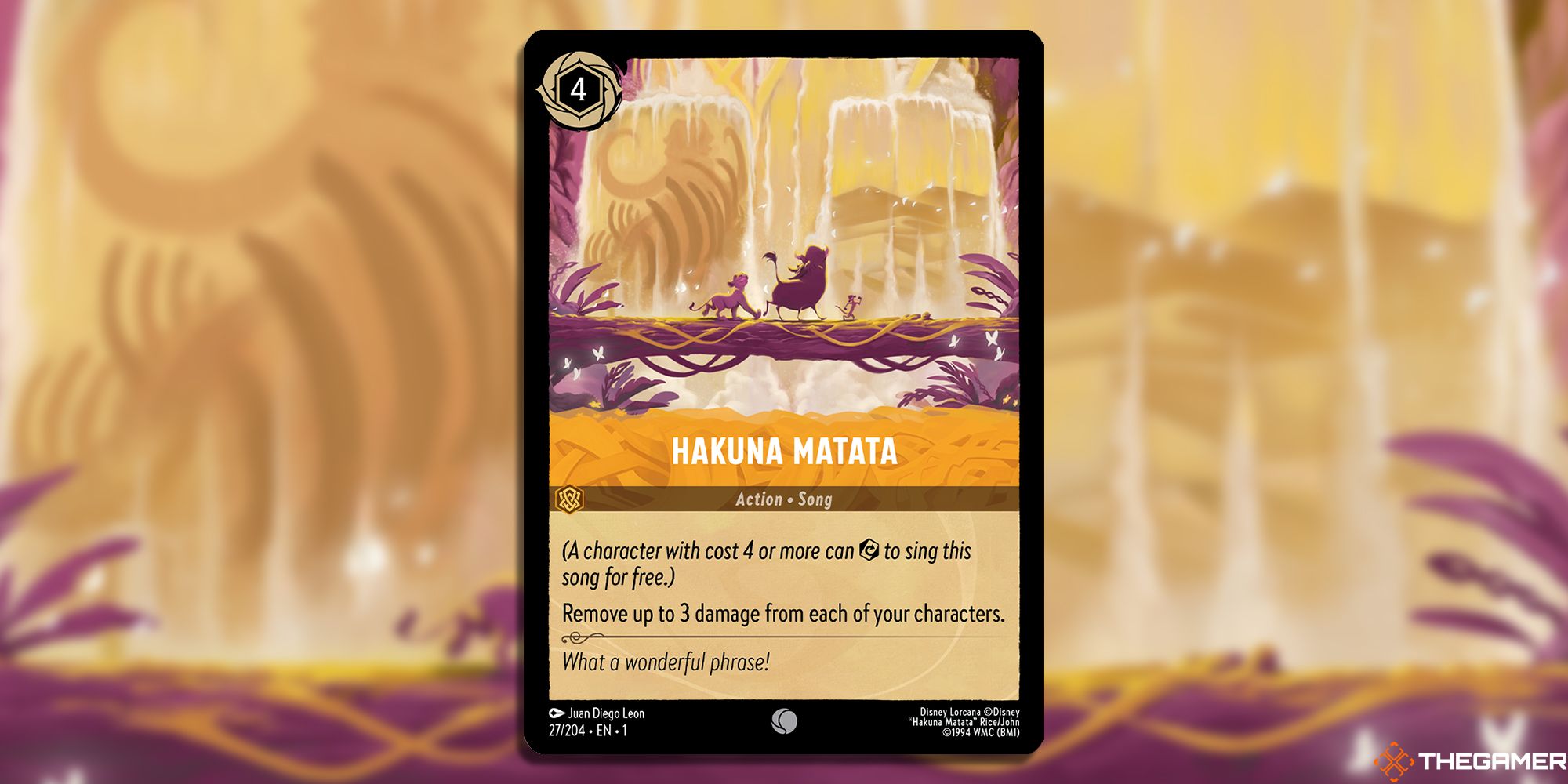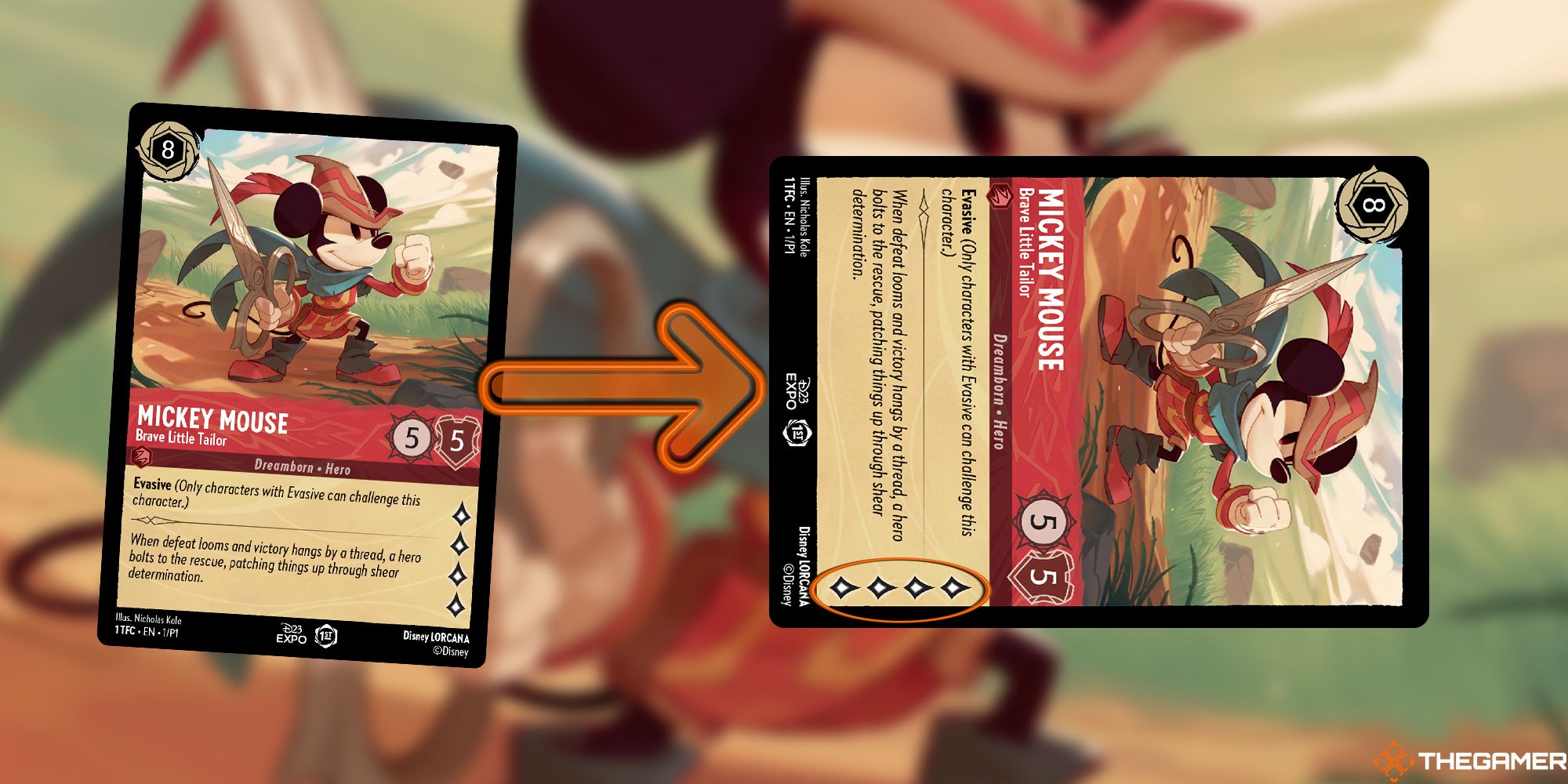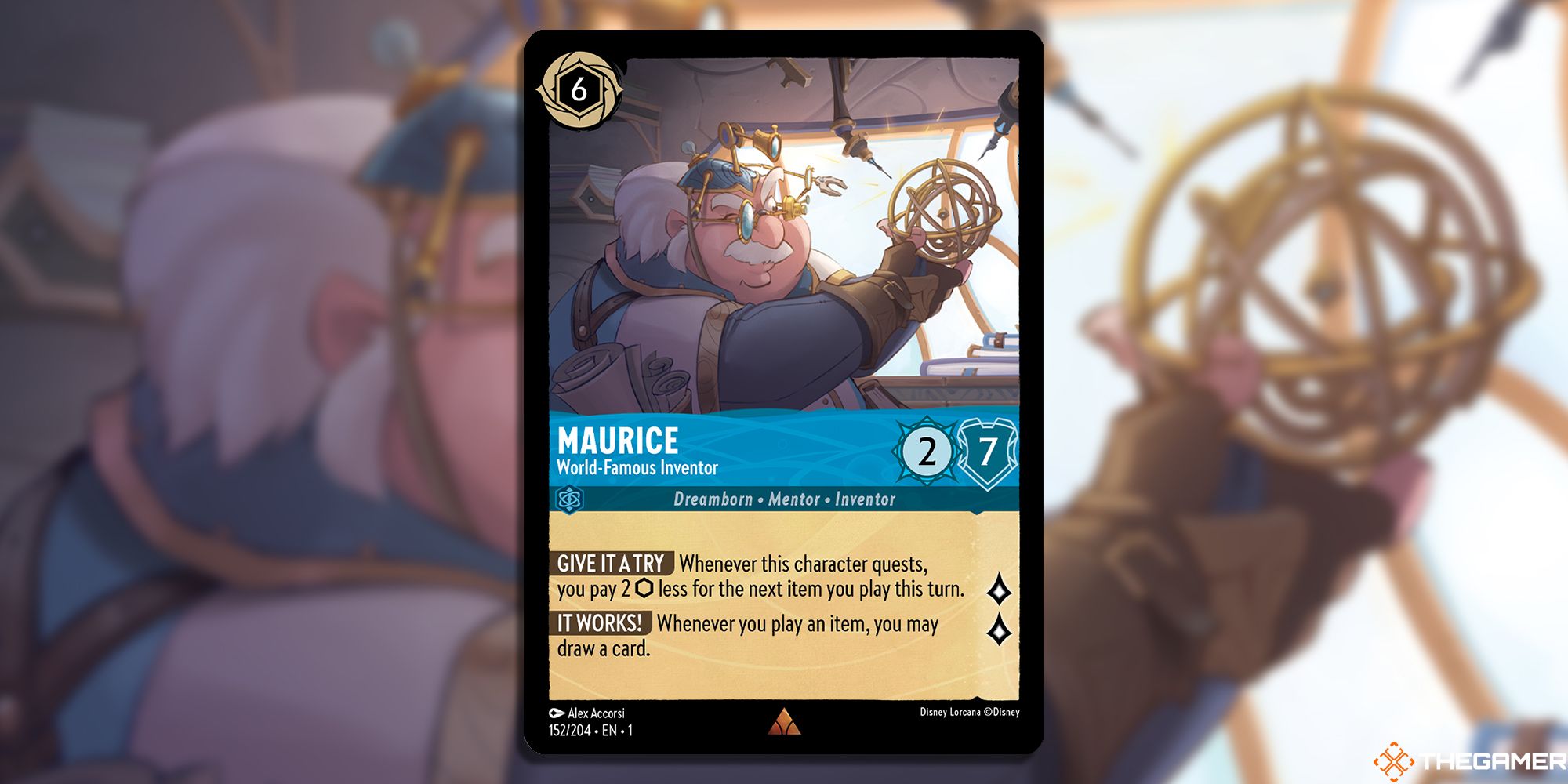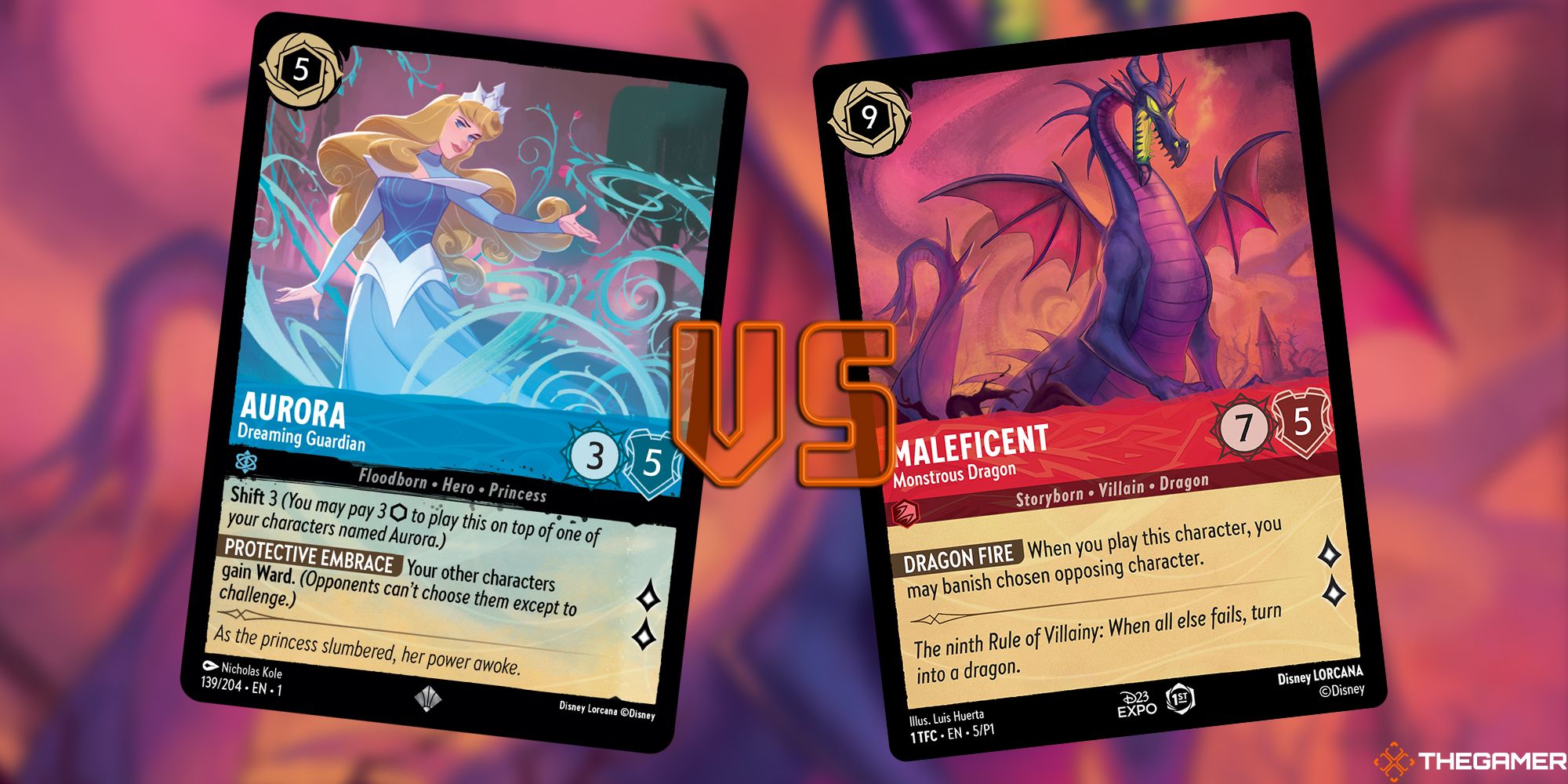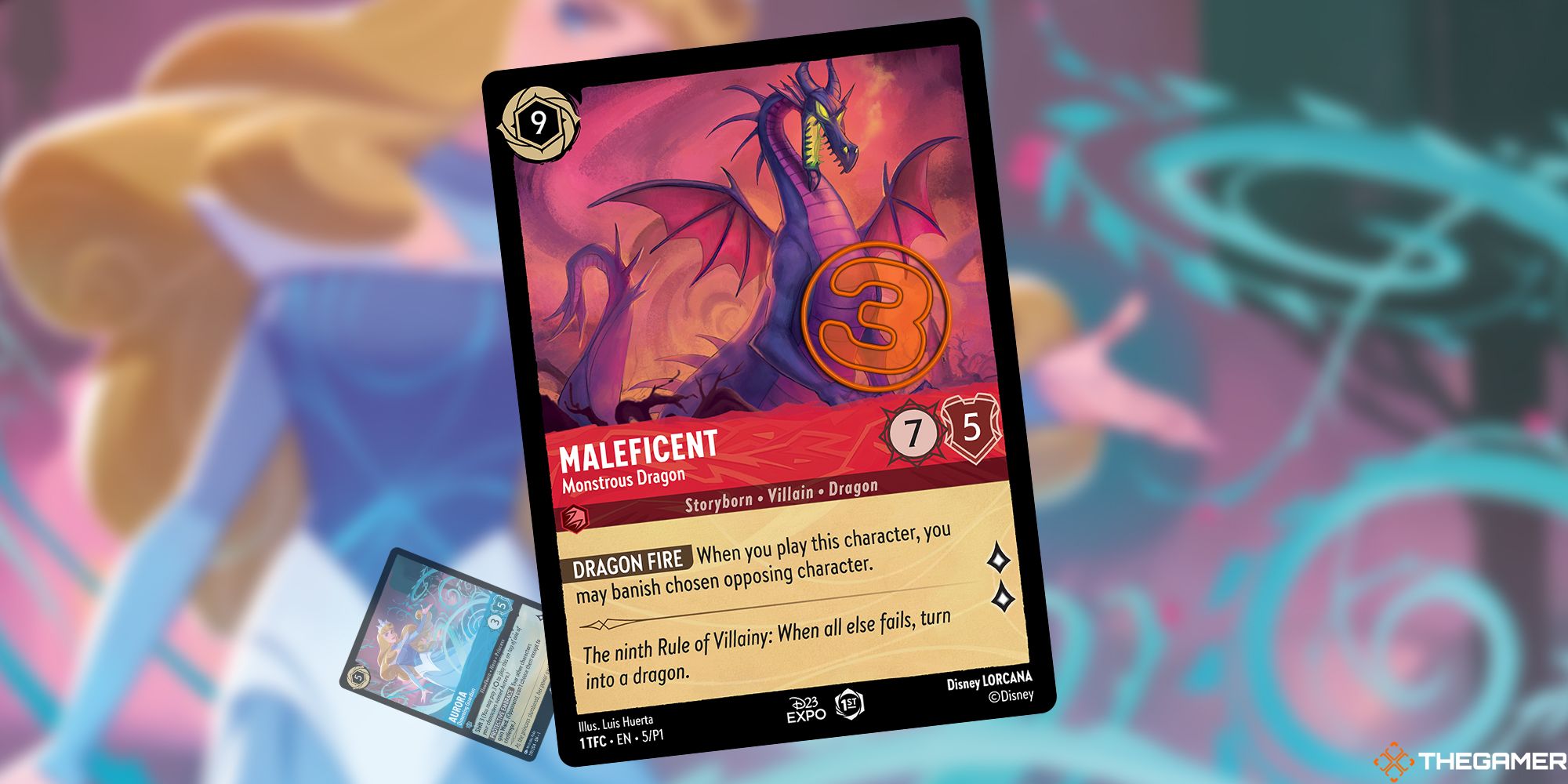Quick Links
Disney Lorcana looks whimsical and colourful, with all those characters, magic spells, and songs, but there’s a surprising amount you need to learn before shuffling up and playing your first game. Don’t let the Winnie the Poohs and Flounders (just sayin'...) fool you, this is just as deep and strategic as any other TCG.
Fortunately, Lorcana is also incredibly accessible. In no time at all, you’ll be brewing decks with your favourite Disney characters and generating Lore with the best of them. Here’s everything you need to know before starting your first game.
Updated July 25, 2023 by Joe Parlock: With only a few weeks until launch, more and more of Lorcana has been unveiled. We've updated this guide to clear up some things we didn't know before, as well as going more in-depth on how song cards work.
Reading A Lorcana Card
Lorcana cards have a number of important stats and abilities on them, and knowing how to read the cards is vital to understanding the game.
Detail | Description |
|---|---|
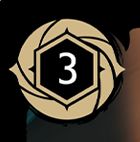 Cost | This is how much ink you need to exert to play the card. If there is a circle around it, known as the Inkwell icon, this card can be placed into your Inkwell to be used as ink. |
 Name | This is the name of the card. You can only have four copies of this exact name in your deck. |
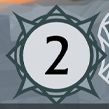 Strength | How much damage the character deals during a challenge. |
 Willpower | How much damage a character can take before it is banished. |
 Classifications | These specify what types the card is. For example, characters might have specific classes, while Actions could specify they are Songs. |
Ink | Ink is effectively what ‘colour’ the character is. You can only have two inks in any deck. |
 Abilities | These are the main things the card can do. They will either be triggered by other actions in the game, or will be things you can activate on your turn. Some abilities are keyworded, meaning they work the same way every time, such as Evasive or Ward. |
 Lore Value | This is how much lore the character will generate when it quests. |
 Set Information | This gives you information about that card’s place in the set it’s from, such as the artist, card number, and language. |
 Rarity | The rarity of the card. There are five rarities: grey Common, white Uncommon, bronze Rare, silver Super Rare, and golden Legendary. |
Building Your Deck
Your Lorcana deck needs to be at least sixty cards, of which you can only have four copies of any name of a card.
Keep in mind the name includes both the regular character’s name and its subtitle. For example, you can only have four copies of Mickey Mouse, Wayward Sorcerer, but you can also have four copies of Mickey Mouse, Brave Little Tailor in the same deck.
Your deck will be composed of three different types of cards, characters, items, and actions:
- Characters serve as your main force for challenging your opponent and can quest for Lore.
- Items, which can’t challenge but have effects and abilities of their own.
- Actions, which offers a one-time effect before going to your discard pile.
- Songs are a subtype of action. They can be played just like any other action, however you can also circumvent their cost provided you have a character that meets the requirements listed on the card.
The only other important rule is that your deck can only have up to two colours of ink in it. Each card in Lorcana is grouped into one of six inks, with each ink having its own abilities and strategic design:
Ink | Description |
|---|---|
Amber (Yellow) | Good at buffing and protecting other cards. |
Amethyst (Purple) | Use abilities and actions to control the table. |
Emerald (Green) | Highly adaptive, and is easily able to avoid or discourage challenges by moving cards from zone to zone. |
Ruby (Red) | Fast and aggressive, and can deal direct damage to characters more efficiently than other inks. |
Sapphire (Blue) | Focuses on playing and using item cards. |
Steel (Grey) | High defence, and good at challenging to “brute force” your way through. |
Winning The Game
There are two ways to win a game of Lorcana.
The first, and main way, is by collecting 20 Lore before your opponents can. This is usually done through questing your characters, meaning you’ll want a big enough board state to allow you to quest at least a couple of your characters each turn.
The second way is by having your opponent run out of cards in their deck. If you go to draw a card, but have no more left in your deck, you immediately lose the game.
Starting The Game And Altering Your Hand
Once all players (ideally two, but more is supported) have a deck and are ready to begin, shuffle your decks and draw seven cards each. This is your opening hand.
If this is the first game, you must keep this opening hand. Otherwise, you are allowed to alter your hand by putting as many cards as you like from it onto the bottom of your library, and then drawing that amount again. You can only alter your hand once; after that, you must keep the seven you have and re-shuffle your deck.
If every player has seven cards in their hand and are ready, use any random way, like rock-paper-scissors, rolling a die, or flipping a coin to decide who goes first. From there, the game can begin for real.
The Phases Of A Turn
Your turn is split into two phases: the Beginning Phase, and the Main Phase.
The Beginning Phase
The Beginning Phase is all about setting up your board ready for your turn, and is further split into three parts: Ready, Set, and Draw.
Step | Description |
|---|---|
Ready | In the Ready step, any of your exerted cards are readiest by turning them 90 degrees into their usual, upright position. |
Set | In the Set step, any abilities that trigger on at the start of your turn are resolved. |
Draw | Draw the top card of your deck. If you’re the first player and it’s the first turn, you skip your Draw step. |
Once the Draw step is finished, you then immediately move into your turn’s Main Phase.
The Main Phase
The Main Phase is where the vast majority of your actions will take place.
In the main phase, you can:
- Reveal a card from your hand, then put it face-down in your inkwell.
- Play Character, Item, and Action cards by paying their ink cost.
- Use character and item abilities. If the ability requires that character to exert, that character must have been in play since the start of your Beginning Phase (meaning it can’t have been played this turn.)
- Make a character Quest for Lore.
- Challenge an opponent’s characters.
Unlike other TCGs, there is no kind of ‘end step’ or ‘ending phase’. Instead, your turn simply ends once you have taken all the actions you are able to and have chosen to do.
After that, any abilities or effects that lasted until the end of the turn come to an end, and the turn passes over to the next player (either your only opponent, or the player to your left when playing in a multiplayer game).
Timing And Priority
Unlike other games, you can only take actions on your own turn. There have so far not been any “instant-speed” cards that can be used on your opponent’s turn, and you can’t activate any abilities of cards already in play unless it is your own main phase. This may change with future releases.
The only exception to this is if one of your character’s abilities is triggered by an action an opponent takes on their turn, such as Mickey Mouse Wayward Sorcerers’ Ceaseless Worker ability triggering when a Broom of yours is banished in a challenge.
Making Ink And Playing Cards
To play any kind of card, you need to pay the amount of ink specified in the top left corner of the card. Unlike other games that need specific cards for their resources, like Magic’s Lands or Pokemon’s Energy, Lorcana has you convert the cards in your hand into ink.
Cards that can be turned into ink will have a more ornate circular symbol around their cost, known as the Inkwell icon. Once per turn, you can reveal a card with the Inkwell icon to your opponent, and then place it face-down in your Inkwell.
Each card in your Inkwell can be exerted to produce one ink, which can then be used to pay for the cost of any other card, or to activate abilities of cards that have an ink cost attached to them. For example, the card Cruella De Vil, Miserable As Usual costs two ink to play, meaning you must exert two ink cards in your Inkwell to play it.
Like all other cards, your ink will be ready to use again at the start of your next Beginning phase. Unlike characters, ink cannot be challenged when it is exerted.
Singing Songs
One of the most powerful plays you can make in Disney Lorcana is singing songs.
Songs are a subtype of actions. Like actions, they are a single-use card that goes to your discard pile when it has been revolved. However, unlike other actions, you could potentially play them without paying any ink.
While you could pay ink to play a Song as normal, all songs have a number at the start of their ability text. This number specifies the cost of a character that can be exerted. If you exert a character with that cost or higher, the song can be played for free.
When playing songs, make sure your board has enough different costs on it to cover all bases. You don't want to find yourself stuck with a song you have to pay actual ink for, so by maintaining your ink curve you'll ensure you can get the maximum bang for your buck.
Questing
Questing is the key way you’ll have to generate lore. The player who gains 20 lore first wins the game, meaning you’ll likely be wanting to quest with your characters every turn.
Questing is an action you can take during your main phase, and is done by exerting a character card. That character will generate lore equal to the Lore Value found on the right hand side of the card. For instance, Mickey Mouse, Wayward Sorcerer generated two lore when it exerts, whereas Cruella De Vil, Miserable as Usual only creates one.
Keep in mind that characters can only be exerted for one reason. This means you can either quest, challenge, or use an ability that requires them to exert, but not all three in the same turn.
Questing doesn’t only produce lore. Maurice, World-Famous Inventor has the ability Give It A Try, which reduces the cost of the next item you play that turn. Meanwhile, Yzma, Alchemist has the You’re Excused ability which allows you to sort the top card of your library to either remain on top or go to the bottom of your deck, which is arguably a more powerful ability.
The downside of questing is that, by exerting themselves, characters become open to being challenged.
Challenging
Challenging is Lorcana’s take on combat. Instead of attacking your opponent directly, like in Magic or Yu-Gi-Oh!, you’re instead using challenges to keep your opponent’s exerted characters in check and prevent them from questing too frequently.
You can only challenge during the main phase of your own turn.
Characters can only challenge if two conditions have been met:
- The character they’re challenging is currently exerted.
- They themselves have been out since the start of the current turn’s beginning phase – once their ‘ink has dried’.
To challenge an exerted character, you must exert your own. From there, both characters in the challenge deal damage to the other equal to their Strength (the first of two numbers on the right of the card). If either character takes more damage than their total Willpower (the second of the two numbers), they are banished and sent to the discard pile.
Damage in Lorcana remains on characters across turns. This means that you can slowly chip away at a larger character by throwing numerous, smaller ones at them. However, it also means your heavy-hitters will gradually accumulate damage over time and be more prone to being banished themselves.
Each character can only challenge once per turn. However, you can challenge the same exerted character with multiple characters within the same turn if you need to get rid of it quickly.

